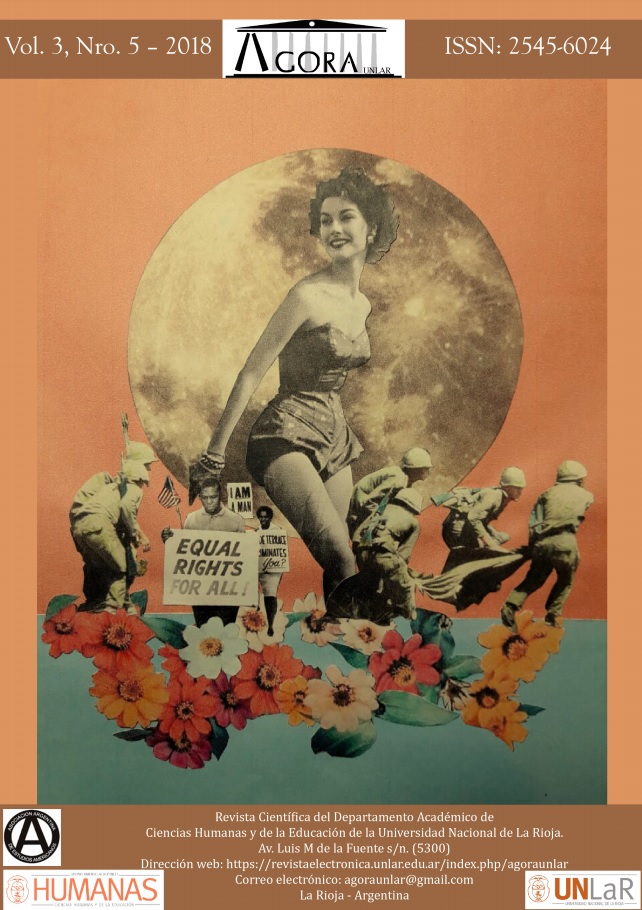SEPARATE AND UNEQUAL: THURGOOD MARSHALL Y EL DESAFÍO A JIM CROW
Keywords:
Movimiento por los Derechos Civiles, Historia, Estados Unidos, Filosofía Política, Poder, DerechoAbstract
Martin Luther King Jr., Rosa Parks, Medgar Evers, Ella Baker...estos nombresdestacan por sus aportes y su incansable lucha para intentar eliminar lasegregación racial y la sujeción que sufría la población afroamericana desdela esclavitud. Ellos, hombres y mujeres tenaces y valientes, fueron partícipesdel conocido Movimiento por los Derechos Civiles (Civil Rights Movement),que tuvo su auge en la década de los ‘60, a través de manifestacionespacíficas, movilizando a organizaciones civiles y sindicales. No obstante,coincidimos con aquellos historiadores que sostienen que la lucha comenzómucho antes, cuando el sistema Jim Crow operacionalizó instrumentoslegales estableciendo “jerarquías de razas” y una taxonomía de “razasbuenas” y razas consideradas como inferiores. En este sentido, planteamosen esta ponencia revisitar la figura de Thurgood Marshall, no tan conocida encomparación con la de las mencionadas anteriormente, pero cuyo rol dentrode la NAACP (National Association for the Advancement of the ColoredPeople) resultó fundamental al desafiar desde el ámbito legal aquellanormativa que perpetuaba la hegemonía del racismo dentro de una sociedadque había ya roto las cadenas de la esclavitud, sentando precedentes y lasbases jurídicas para encender la llama del activismo por los derechos de laspersonas de color, especialmente en la década de 1960 en Estados Unidos. SEPARATE AND UNEQUAL: THURGOOD MARSHALL AND THE CHALLENGE TO JIM CROWABSTRACTMartin Luther King Jr., Rosa Parks, Medgar Evers, Ella Baker...these namesstand out for their contributions and their tireless struggle to try to stop theracial segregation and subjection that the African American people had beensuffering since the times of slavery. Those tenacious and brave men andwomen took part in the renowned Civil Rights Movement, which rose inthe sixties through peaceful demonstrations and rallied NGOs and unions.However, we agree with those historians who claim that struggle beganeven earlier, when Jim Crow implemented legal mechanisms to establish“racial hierarchies” and a taxonomy of “good races” and inferior races. In thissense, we present in this paper a revision of Thurgood Marshall, a not-so-well- known figure in comparison with the previously mentioned actors, butwhose role within the NAACP (National Association for the Advancement ofthe Colored People) became fundamental in order to challenge from the legalrealm the laws that perpetuated racial hegemony within a society which hadalready broken the chains of slavery. This set a precedent and the legal basisto light the flame of activism for the rights of colored people, especially in the1960s in the United States.Keywords: Civil Rights Movement, History, USA, Political Philosophy,Power, LawDownloads
Published
2018-10-31
Issue
Section
ARTÍCULOS DE INVESTIGACIÓN O REVISIÓN TEÓRICA





